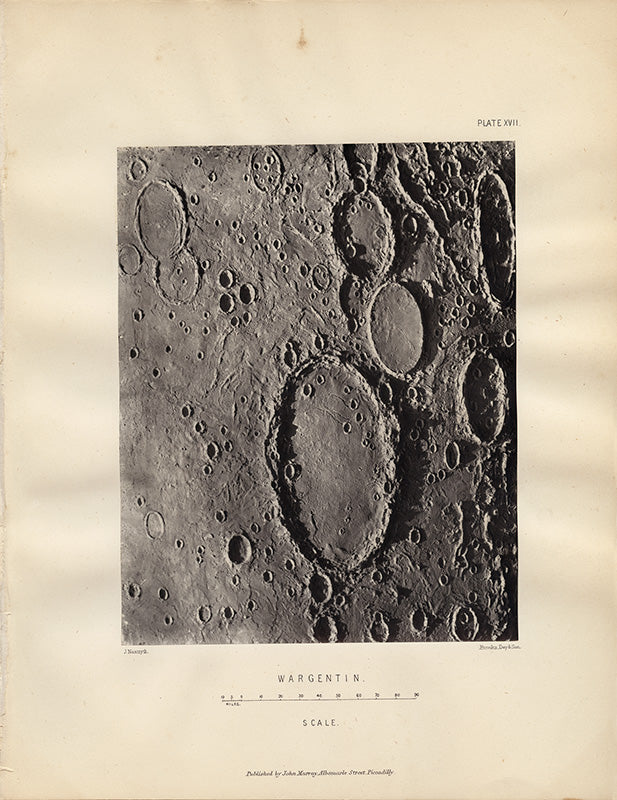

James Hall Nasmyth
Wargentin by James Hall Nasmyth
 Toronto, ON)
Toronto, ON)
Learn about our Shipping & Returns policy.
Have a question? Read our FAQ.
- Artwork Info
- About the Artist
- About this Photograph
- Artist News
-
1874
Woodburytype print mounted to period single-ply support
Titled with copyright and annotated with printer and plate number as part of printing plate, in ink, au mount recto
Published by John Murray, Albemarle Street, Piccadilly, London
Plate 17 from the book "The Moon: Considered as a Planet, a World, and a Satellite"
Printed circa 1874
SBG-JN-1-0003-O -
James H. Nasmyth (1808–1890) was a successful Scottish engineer and inventor who retired at age 48 and turned his attention to astronomy. Nasmyth made sketches of the lunar surface as seen through a 20-inch reflecting telescope. He then used these sketches to construct meticulous plaster models which he lit dramatically in order to take photographs that mimicked the effect of the sun as observed through the viewfinder of his telescope. In 1874, he co-wrote The Moon: Considered as a Planet, a World, and a Satellite with James Carpenter, a publication which was illustrated with Woodburytype prints.
-
This excerpt from the August 15, 2019 issue of The New York Review of Books outlines the legacy of Nasmyth’s studies of the Moon, and his 1874 book The Moon: Considered as a Planet, a World, and a Satellite:
Nasmyth’s photographs can be seen in a superb exhibition, “Apollo’s Muse: The Moon in the Age of Photography,” now at the Metropolitan Museum (Summer, 2019). They are peculiar and fantastic, using plaster and staged lighting to create images of mountains and craters that could not yet be properly seen—a new kind of imaginative fiction posing as science. Indeed, scientists were eager to believe: “No more truthful or striking representations of natural objects than those here presented have ever been laid before his readers by any student of science,” the journal Nature declared in March 1874.
-
Moon Fever - The New York Review of Books, August 2019

